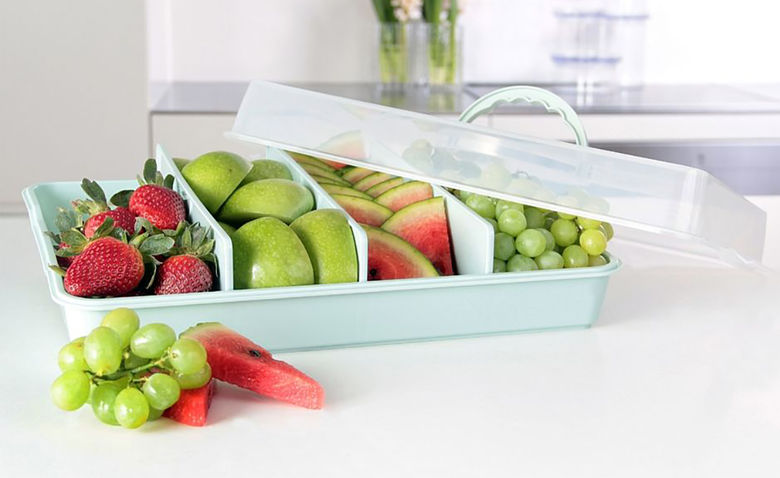None of us want to do without coffee. But how much coffee is healthy and what kind of damage occurs with excessive consumption?
Many myths rank about the effect of coffee on our health. Reason enough to take a closer look
Coffee is one of the most popular drinks in the world. With us in Germany, too, every German citizen drinks an average of around 149 liters of coffee a year. With such a high consumption, the questions quickly arise how much coffee is healthy and whether any health problems can arise. To do this, the coffee must be checked for its ingredients and their effects have to be looked at more closely. Since most of us drink several cups of coffee during the day, the result should be more than interesting.
The favorite drink of par excellence: the coffee! With over 800 aroma fabrics in just one coffee bean, it convinces with a real variety of flavors and great properties. In addition to the coffee acid and numerous bitter substances, there are unmistakable beverage variations, which give every coffee lover unique moments of pleasure. It is not surprising that most of us reach for the first cup of coffee in the morning. The person contained in the coffee quickly displaces any morning tiredness and keeps us fit for the rest of the day. Above all, the well -known afternoon depth is combated with the help of the guard. In addition to classic black coffee, many also drink milk creations such as a latte macchiato or cappuccino. The selection is almost infinite – but how much coffee is healthy for us? As so often, many factors play a role here. In addition to the ingredients and coffee variation, it is mainly important to the mass of the coffee we recorded.
Coffee: sick maker or power donor?
Whether coffee is healthy or unhealthy, the spirits often differ. It is clear that it is a popular drink worldwide, which is taken several times a day by many people. The ingredients of the pleasure drink are very versatile. With more than 800 aroma substances, acids, caffeine (alkaloids), minerals, protein and much more, coffee provides our body plenty of input. Most of these ingredients are absolutely harmless to us and also convince with valuable nutrients. It only becomes problematic with an increased supply of caffeine or with too many bitter substances. But how much coffee is healthy in the end? In particular, we take a closer look at the caffeine content.
For most, caffeine is the must-have in coffee. It ensures that after a short time we feel awake and cheer, can think and work more efficiently and help us through daily morning fatigue as well as the afternoon depth. Unfortunately, it is the caffeine that can harm our body. Medical studies set a limit of 400 milligrams of caffeine a day. As long as this value is not exceeded, the guard is absolutely harmless to us. Converted into coffee, this corresponds to about four cups of filter coffee. Around 71.3 percent of all Germans move within this limit and remain below the four cups mentioned.
So the question is less how much coffee, but much more how much caffeine is healthy. Since we also take other foods and drinks in addition to the daily coffee, we have to keep an eye on the caffeine intake throughout the day. In addition to filter coffee, for example, a cup of espresso with 50-60 mg caffeine, a 0.33 liter dose of cola with 10 mg caffeine, a dark chocolate with up to 115 mg caffeine and a 250 ml energy drink with 80 mg caffeine. In addition, you have to take a closer look at all kinds of coffee creations. Not every coffee contains the same amount of caffeine. If additives are used, they can bring an extra caffeine into play.
If you do not exceed the daily maximum dose of 400 milligrams of caffeine, you don’t need to worry about health consequences. With a larger intake, over a longer period of time, however, there is getting used to in the brain. The consequences can be insomnia and concentration disorders. Coffee and the associated caffeine are completely harmless in moderation. Anyone who does not exaggerate it with daily consumption can calmly indulge in the enjoyable taste of the coffee bean and does not have to worry about any health risks. If the desire for coffee gets a little larger, it is advisable to grab for decaffeinated coffee – this is usually offered in all shops and cafés and offers a great alternative to caffeinated coffee.
Attention risk groups!
The border of 400 milligrams of caffeine a day is usually a good clue for all coffee lovers. However, there are some risk groups that react a little more to coffee and have to hold back accordingly. Especially people with high blood pressure or those who suffer from insomnia must be careful with daily caffeine. Even pregnant women can have problems with excessive coffee consumption. Their organism is directly connected to that of their babies and passes on the caffeine unfiltered. Incidentally, this also happens when breastfeeding small children! Nobody has to do without coffee. A few cups of the pleasure drink per week are perfectly fine and should not cause health problems.











